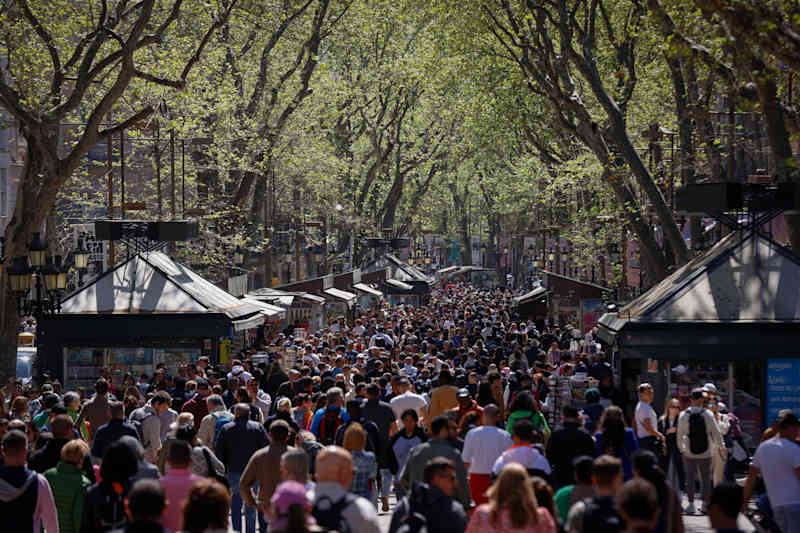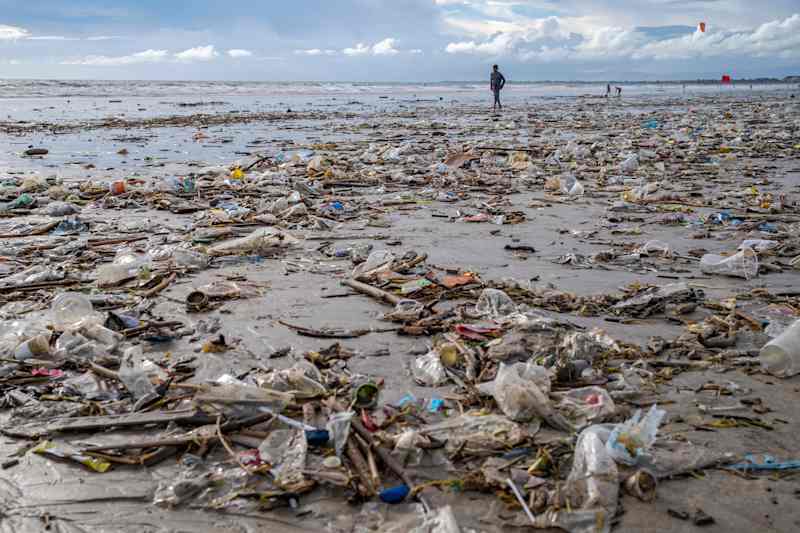The list is out: these popular tourist destinations are no longer worth a trip
In Europe, the problem is rising housing costs due to mass tourism; in Asia, it is waste management.
Fodor’s, which has been producing travel guides for almost 80 years, has published a list of places not to visit this year. Fodor’s has published a similar list since 2017.
According to Fodors, the aim is not to encourage people to boycott, but to tell people about places where mass tourism is causing so many problems that it is difficult to enjoy the trip.
Travelling in large crowds, among reluctant locals and in a littered environment does not make for a good holiday,” Fodor’s says, explaining the list. The problems at the sites on the list have been brought to the attention of local decision-makers many times, but this has not improved the situation. In many cases, the problems have even worsened.

Fodor’s justifies the end of five European sites on the list of living costs for tourism and anti -mass tourism demonstrations. Asian destinations, on the other hand, suffer from the environmental risks of littering.
Barcelona, Spain
Barcelona is one of Europe’s most famous destinations where mass tourism has begun to be a problem. Last summer, residents in Barcelona demonstrated their mind against mass tourism by spraying water on tourists.
Among other things, protesters shouted \”go home tourists\” and carried signs that read \”tourism kills the city\”.
The situation in the city has become tighter as there are so many homes for tourists that many locals can no longer afford to accommodate tourists in residential houses since 2028.
Mallorca, Spain
On Mallorca Island, the locals also protested against tourists last summer as residents gathered with signs on Mallorca’s most famous beach.
The Es Caló des Moro beach was previously difficult to reach a small destination, which could only come from rumors. However, in recent years, the beach has been queued for as long as three hours.

Canary Islands, Spain
The inhabitants of the Canary Islands have organized a tens of thousands of hunger strikes.
Those who went to the hunger strike opposed two major resort projects that are estimated to be threatening untouched beaches with rare plants and archaeological sites.
Last year, a record 18 million tourists visited the Canary Islands, which is more than eight times more than the population of the islands.
Venice, Italy
Venice has also been on the list of Fodor’s avoidable places in 2018, 2023 and 2024.
The city has long been struggling with tourists who go to see the sights, leave its garbage and leave the same day with no money at all.
Venice recently introduced an entrance fee of five euros to tourists who only visit the city during the day during the high season. It previously banned cruise ships from the lagoon off the city.
However, according to UNESCO, who controls the cultural heritage, the city has not done enough to protect a sensitive, historically valuable city.
Lisbon, Portugal
60 % of Lisbon’s apartments are intended for tourists and the city has lost almost a third of its inhabitants since 2013.
The locals have reported that community has diminished, as there may be only a few permanent residents in the houses and the rest are tourists.
– If this pace of expulsion of the inhabitants continues, tourists will see only each other in Alfama’s streets in a few years, writes Spanish magazine El Pais.

Bali, Indonesia
Bali ended up on the Fodor’s list because the island’s waste management does not keep up with huge volumes of tourists.
Bali’s tourism is based on magnificent nature, but the beautiful scenery and the island’s ecosystem are threatened, for example the beaches of Kuta and Seminyak, known for their turquoise water, are covered with plastic trash.
Last year, Bali visited 6.3 million inhabitants.
Ko Samui, Thailand
In 2023, 3.54 million tourists visited the small island of Samui, which meant nearly 10,000 tourists a day. The island is only slightly larger than Helsinki.
Special fear was already raised in advance by the new season of the * White Lotus * series, which is located in the luxury resort on the island. The popular series has led a lot of tourists to their previous subjects.
Ko Samu has so many tourists that it is difficult to handle waste. Dozens of tonnes of rubbish are transported daily from the island to the mainland, but it is still feared to be a safety risk.
Tourism also causes other environmental problems. Golf courses and luxury resorts consume a huge amount of fresh water. On the other hand, motor boat traffic and beach party expels sea animals.
Mount Everest
Mount Everest in the world is popular with wealthy travelers.
Tourists leave a large amount of debris and stools, and it is difficult to get waste down the mountain. For example, helicopters cannot fly so high that they can get the waste away.
According to local carriers, Everest also has a lot of hikers who are not in good enough condition for demanding climbing.
Fodor’s also listed items that start to look bad. These included Kyoto and Tokyo in Japan, Agriento in Sicily, British Virgin Islands, Kerala, India, Mexican Oaxaca and the North Coast 500 in Scotland.
